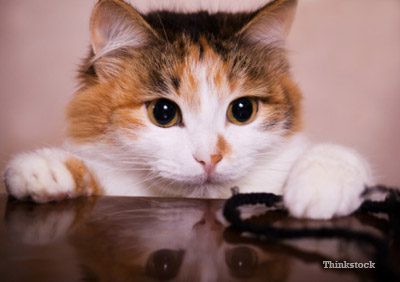Why is the cat drooling
Many cats drool when they purr with pleasure. This is normal. You need to sound the alarm if saliva is released frequently and in large quantities. In this way, the animal’s body signals a serious problem.
Why is the cat drooling so much?
Drooling is common in dogs, but is not common in cats. The increased work of the salivary glands is caused by diseases of the teeth, upper respiratory tract or internal organs.
The main causes of excessive salivation are:
- difficulty swallowing. It often happens that large pieces of food, toys and lumps of its own wool get stuck in the throat of an animal;
- seasickness. A trip in a car or an air flight is a huge stress for a cat. If the pet is often taken on trips, he is nervous and drooling;
- heatstroke. All felines do not tolerate overheating in the sun and thirst. “Persians” and other short-muzzled cats especially suffer in the heat;
- gum disease and tooth decay. Tartar that forms on the sides of the teeth rubs the cat’s lips from the inside and causes salivation;
- kidney disease. Disorder of the kidneys leads to metabolic disorders. The esophagus and throat of the animal are covered with ulcers from the inside. The body reacts to irritation by drooling;
- respiratory tract infections. A runny nose and cough interfere with normal breathing. The animal’s mouth dries up, the salivary glands begin to work more actively;
- poisoning. Toxic food causes nausea and, as a result, drooling.
To find out the specific cause, the animal must be carefully examined.
The cat is drooling: what to do?
First of all, you need to find out what caused the increased salivation. Sometimes you can help an animal without the help of a veterinarian. They do it like this:
- check the cat’s teeth by gently pulling its lips up and back. Examine the oral cavity. If the teeth are yellow or brown, the pet should be taken to the veterinarian. The doctor will remove tartar and explain how to brush your cat’s teeth regularly for prevention. See your veterinarian if your gums are swollen, reddened, or bleeding.
- examine the cat’s throat. To do this, take the animal with one hand by the upper part of the head, and with the other, pull the lower jaw down. If a foreign body is stuck in the throat, you need to pull it out with your fingers or tweezers;
- make sure the cat is not overheated in the sun or in a stuffy room. If heatstroke occurs, the pet needs to moisten its head abundantly with cold water, put it in a cool place, and turn on the fan.
Self-help may not be enough. If a cat is drooling and at the same time the animal sneezes, breathes heavily, coughs, these are signs of a respiratory tract infection. Bad breath, frequent urination, and constant thirst indicate kidney disease.
If you are not sure why your cat is drooling, you need to go to the vet as soon as possible. The doctor will find out the cause with examination, tests, or x-rays. The sooner you know what the problem is, the sooner your furry friend will recover.










